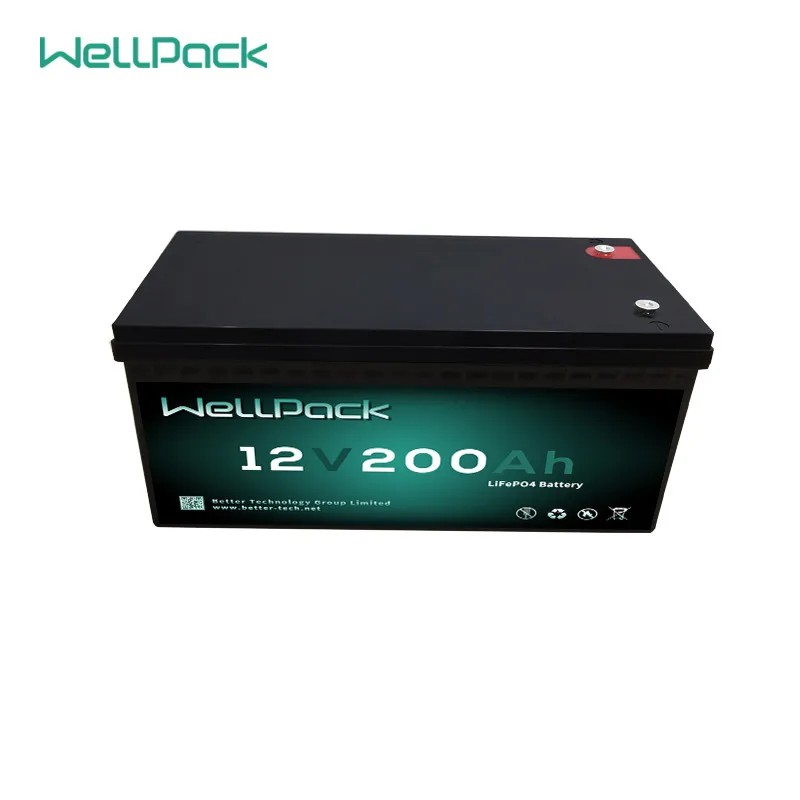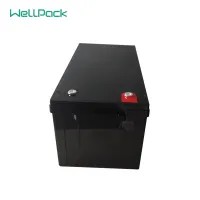
A Comprehensive Analysis of the Application and Solutions for Energy Storage Lithium Batteries
2024-10-28 18:00In modern energy management, storage batteries play a crucial role. With the rise of renewable energy and increasing electricity demand, choosing an efficient and reliable storage battery is particularly important. The 12V 200Ah energy storage lithium battery has gained widespread attention in the market due to its excellent performance. However, users may encounter various issues during actual use. This article will focus on these common problems and propose specific solutions to help users better apply this product.
Table of Contents
Charging Issues
1.1 Charging Time Too Long
1.2 Unable to Fully Charge
1.3 Heating During Charging
Lifespan Issues
2.1 Shortened Cycle Life
2.2 Rapid Capacity Degradation
Safety Issues
3.1 Overheating and Fire Risks
3.2 Short Circuit and Electric Shock Hazards
Compatibility Issues
4.1 Mismatch with Existing Systems
4.2 Compatibility Between Different Devices
Installation and Maintenance Issues
5.1 Complex Installation
5.2 High Maintenance Costs
Environmental Adaptability Issues
6.1 Temperature Effects
6.2 Humidity and Corrosion Problems
Cost Issues
7.1 High Initial Investment
7.2 Long-Term Operating Costs
Conclusion
1. Charging Issues 1.1 Charging Time Too Long
Problem Description: Some users report that charging the 12V 200Ah lithium battery takes too long, affecting system efficiency.
Solutions:
· Choose the Right Charger: Use a high-efficiency charger that matches the battery specifications. For example, selecting a charger that supports fast charging can significantly reduce charging time.
· Optimize Charging Environment: Ensure the charging environment is at a suitable temperature; extremes can affect charging efficiency. The ideal charging temperature range is typically between 20°C and 25°C.
· Parallel Charging: If system design allows, consider using multiple chargers in parallel to charge the battery simultaneously, thereby increasing overall charging speed.
· Regular Maintenance: Keep chargers and batteries clean to prevent dust and dirt from affecting charging performance.

1.2 Unable to Fully Charge
Problem Description: Some users find that the battery cannot be fully charged, leading to insufficient energy storage and impacting subsequent usage.
Solutions:
· Check Charger Settings: Ensure the output voltage and current of the charger match the battery requirements. Mismatched charging parameters may result in incomplete charging.
· Software Management: Use a smart Battery Management System (BMS) to monitor the battery's charging status and ensure voltage and current are within safe limits.
· Battery Health Check: Regularly assess the battery's health status to identify any internal damage or capacity decline. If the battery is severely aged, it may need replacement.
· Connection Check: Ensure the connection between the charger and battery is secure to avoid incomplete charging due to poor contact.
1.3 Heating During Charging
Problem Description: The battery exhibits abnormal heating during charging, posing safety risks.
Solutions:
· Ventilated Environment: Ensure the charging environment is well-ventilated to prevent heat buildup. Fans or installations in well-ventilated areas can help.
· Use Heat Dissipation Devices: Install heat sinks or other cooling devices to help the battery dissipate heat during charging.
· Monitoring System: Equip with temperature sensors to monitor battery temperature in real-time. The system should automatically adjust charging parameters or stop charging if the temperature exceeds set thresholds.
· Avoid Overcharging: Use the BMS to strictly control the charging process, preventing overheating from overcharging.
2. Lifespan Issues 2.1 Shortened Cycle Life
Problem Description: Users find that the battery's cycle life is shorter than expected, resulting in frequent replacements and increased usage costs.
Solutions:
· Optimize Charge and Discharge Strategy: Avoid deep discharges and overcharging, keeping the battery within the optimal charge and discharge range. For instance, maintaining the battery charge between 20% and 80% can extend its lifespan.
· Temperature Control: Avoid using and storing the battery in extreme temperatures, as both high and low temperatures accelerate aging.
· Regular Maintenance: Periodically check the battery's condition, clean its surface, and ensure the battery management system is functioning correctly to identify and address potential issues promptly.
· Use High-Quality Batteries: Choose lithium batteries from reputable brands with guaranteed quality to ensure high cycle life.
2.2 Rapid Capacity Degradation
Problem Description: The battery capacity declines rapidly over time, failing to meet long-term energy storage needs.
Solutions:

· Avoid Over-Discharge and Over-Charge: Strictly control charge and discharge depth to prevent the battery from being in a high-load or deep discharge state for extended periods.
· Use Intelligent BMS: Adopt advanced battery management systems to monitor battery status in real-time, optimizing the charge and discharge process to reduce capacity loss.
· Balanced Charging: Ensure voltage balance among individual cells to prevent over-discharging or over-charging of certain cells, thus slowing capacity degradation.
· Regular Calibration: Periodically calibrate the battery to ensure accurate capacity display, preventing excessive use due to inaccuracies.
3. Safety Issues 3.1 Overheating and Fire Risks
Problem Description: Lithium batteries may overheat during use, even causing fires, threatening personal and property safety.
Solutions:
· Multiple Safety Protections: Choose lithium batteries with overcharge, over-discharge, over-current, and short-circuit protection to automatically cut off current under abnormal conditions to prevent overheating.
· High-Quality BMS: Equip with efficient battery management systems that monitor battery temperature, voltage, and current in real-time to detect and address abnormalities promptly.
· Proper Installation: Avoid stacking batteries too high and ensure good heat dissipation conditions to prevent heat accumulation.
· Regular Inspections: Periodically check the safety performance of the battery and system, replacing any damaged or aged batteries in a timely manner.
3.2 Short Circuit and Electric Shock Hazards
Problem Description: Short circuits may occur during battery use, leading to electric shocks or equipment damage.
Solutions:
· Insulation Measures: Ensure battery terminals and connectors have good insulation to prevent short circuits from metal contact.
· Safety Devices: Install fuses or circuit breakers in the battery system to prevent excessive current from causing hazards during short circuits.
· Proper Operation: Follow operational guidelines when using and maintaining the battery to avoid introducing conductive objects into battery terminals.
· Education and Training: Provide safety training for users to enhance their awareness and skills regarding safe battery usage.
4. Compatibility Issues 4.1 Mismatch with Existing Systems
Problem Description: Users find that the 12V 200Ah lithium battery is incompatible with their existing energy management systems or devices, preventing normal use.
Solutions:
· System Assessment: Conduct a comprehensive evaluation of the existing system before purchase to ensure that the battery's voltage, current, and capacity match system requirements.
· Professional Consultation: Consult battery suppliers or technical experts for professional advice on compatibility to avoid purchasing incompatible products.
· Customized Solutions: Choose customizable battery systems based on actual needs to ensure seamless integration with existing equipment.
· Use Converters: If necessary, use voltage converters or other interface devices to achieve compatibility between different systems.
4.2 Compatibility Between Different Devices
Problem Description: In multi-device environments, compatibility issues between the battery and various devices may lead to some devices being unable to receive power.
Solutions:
· Modular Design: Choose modular battery systems that can flexibly configure based on the needs of different devices, ensuring stable power supply to all devices.
· Intelligent Distribution: Use intelligent power management systems to dynamically allocate battery power based on device priority and power needs, avoiding overload or shortages.
· Unified Standards: Opt for devices and batteries that comply with international standards to improve compatibility and reduce issues.
· Testing and Verification: Conduct thorough compatibility tests before formal use to ensure the battery works well with all devices.
5. Installation and Maintenance Issues 5.1 Complex Installation
Problem Description: Some users report that installing the 12V 200Ah lithium battery is complex and requires professional skills, increasing installation difficulty and costs.
Solutions:
· Professional Installation Services: Choose suppliers that offer professional installation services, ensuring that the battery system is installed by experienced technicians to reduce user burden.
· Detailed Instructions: Provide comprehensive installation manuals and video tutorials to guide users through correct installation steps.
· Modular Design: Opt for simple and modular battery systems to reduce installation steps and improve efficiency.
· Training and Support: Suppliers should provide installation training and technical support to help users resolve installation challenges.
5.2 High Maintenance Costs
Problem Description: Users are concerned that the maintenance costs of the battery are too high, affecting long-term economic viability.
Solutions:
· Low Maintenance Design: Choose lithium batteries with simple designs that are easy to maintain, reducing maintenance frequency and complexity.
· Remote Monitoring: Equip with remote monitoring systems to track battery status in real-time, promptly identifying and addressing potential issues to lower maintenance costs.
· Regular Maintenance: Establish and implement a regular maintenance schedule, including battery cleaning, connection checks, and performance testing, to extend battery life and reduce maintenance frequency.
· Supplier Support: Choose suppliers that provide comprehensive after-sales service, offering technical support and maintenance services to lower user maintenance costs.
6. Environmental Adaptability Issues 6.1 Temperature Effects
Problem Description: The performance of lithium batteries is often affected by temperature changes, impacting energy storage and discharge capabilities.
Solutions:
· Temperature Monitoring: Equip batteries with temperature sensors to monitor real-time temperature and adjust usage strategies accordingly.
· Insulation Materials: Use appropriate insulation materials for battery storage to reduce temperature fluctuations' impact.
· Controlled Environment: When possible, install batteries in environments with controlled temperatures to ensure stable performance.
· User Guidelines: Provide users with guidelines on suitable operating temperatures and how to mitigate adverse effects.
6.2 Humidity and Corrosion Problems
Problem Description: High humidity may lead to corrosion of battery connections, reducing performance and lifespan.
Solutions:
· Sealed Design: Choose batteries with sealed designs or waterproof features to prevent moisture intrusion.
· Regular Inspection: Periodically check battery connections for corrosion and clean them to maintain optimal performance.
· Use of Corrosion-Resistant Materials: Select connectors and terminals made from corrosion-resistant materials to improve reliability.
· Proper Storage Conditions: Ensure batteries are stored in dry environments to minimize humidity exposure.
7. Cost Issues 7.1 High Initial Investment
Problem Description: The initial purchase cost of a 12V 200Ah lithium battery is high, deterring some users from investing.
Solutions:
· Long-Term Value Assessment: Emphasize the long-term value of lithium batteries, including durability, performance, and lower operating costs compared to traditional batteries.
· Financing Options: Provide financing or leasing options to make it easier for users to invest in lithium batteries.
· Government Incentives: Inform users of potential government subsidies or incentives for using renewable energy technologies, which can offset costs.
· Bundled Offers: Consider offering bundled deals that include batteries and necessary accessories to provide overall value and reduce upfront costs.
7.2 Long-Term Operating Costs
Problem Description: Users may be concerned about the long-term operating costs associated with energy management systems utilizing lithium batteries.
Solutions:
· Efficiency Optimization: Emphasize optimizing system efficiency and reducing energy waste to lower overall operating costs.
· Regular Maintenance Schedule: Establish a regular maintenance schedule to ensure system performance and extend battery life, reducing long-term costs.
· User Training: Provide training to users on efficient usage methods and strategies to optimize battery performance and reduce operational costs.
· Utilize Renewable Energy: Encourage users to combine battery systems with renewable energy sources to further reduce operating costs.
8. Conclusion The 12V 200Ah energy storage lithium battery offers significant advantages in modern energy management, but users may encounter various issues during practical applications. By understanding these challenges and implementing effective solutions, users can optimize the performance and longevity of their battery systems, ultimately achieving more efficient and cost-effective energy management.
